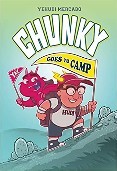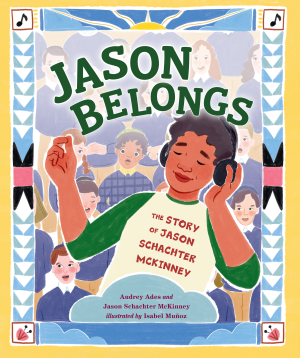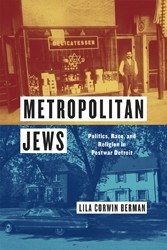It isn’t easy to be a hero — sometimes standing up instead of standing by invites difficult consequences. A Fist for Joe Louis and Me tells the story of two boys in Detroit during the Great Depression, one African American and one Jewish, and how they forged a bond through their shared admiration for boxer Joe Louis. In 1938, heavyweight champion Louis defeated German fighter Max Schmeling, symbolically knocking to the ground the Nazis’ specious racial theories which deemed Louis inferior to his “Aryan” rival. Gordy Williams and Ira Rubinstein’s faith that Louis would prevail reflects their own experiences, as well as that of their parents’, at a time when racism and economic hardship tested many Americans. Trinka Hikes Noble and Nicole Tadgell craft a moving and believable tale, in which physical courage and moral conviction are the right course in a frightening world.
Noble’s language is straightforward, but as rhythmic as a boxer’s one-two punch: “That fall my father lost his job, and his big strong hands turned into tense clenched fists.” She simplifies facts and emphasizes key details, keeping the momentum of the story moving. Gordy’s mother needs to help support their family by sewing at home for Mr. Rubinstein, a tailor. The Rubinstein family is new to Detroit and Ira’s lack of familiarity with the city contrasts with Gordy’s deep knowledge of his hometown. Adults will recognize historical facts about Jewish involvement in the needle trades and the disparate impact of the Depression on African Americans, but children will be engrossed in the narrative without this background. The boys are clearly different, but they share their families’ vulnerabilities and their mutual consciousness of fascism’s looming threat.
When Ira becomes the victim of a bully, Noble chooses to present Nicky Benkowski as every child’s nightmare. Nicky taunts Ira, calling him a “skinny little punk,” but in reality, he almost certainly would have used antisemitic epithets. When it becomes apparent that Ira’s attempt to ignore his tormentor is ineffective, Gordy needs to make a decision, and so does the author. Noble’s description of Gordy’s response succeeds in reinforcing the value of standing up to aggression without glorifying the necessity for violence. The fight scene, which is central to the book’s message, is nuanced, pointing to Gordy’s almost balletic skills in defending his friend while imagining the calm and steady voice of Louis encouraging him in his bravery.
Tadgell’s pictures beautifully evoke the era, making the story both specific to its historical moment and a timeless exploration of friendship and loyalty. Scenes of the boys practicing boxing render them as blue shadows, while other images are fully realized portraits of people supporting one another in adversity. She is equally adept at conveying interior moments of thought and dramatic action sequences. In one powerful summary of the book’s message, the two fathers clasp hands across a kitchen table where a coffee cup and newspapers in the center are simple reminders of a shared moment. Tadgell unapologetically calls for emotional identification through bold gestures and expressive faces as characters interact with one another.
A Fist for Joe Louis and Me is highly recommended for children as well as for adults interested in presenting a shared moment of history for African Americans and Jews. It includes an “Author’s Note,” which adds brief historical background and explains how Noble came to write the book.
Emily Schneider writes about literature, feminism, and culture for Tablet, The Forward, The Horn Book, and other publications, and writes about children’s books on her blog. She has a Ph.D. in Romance Languages and Literatures.





